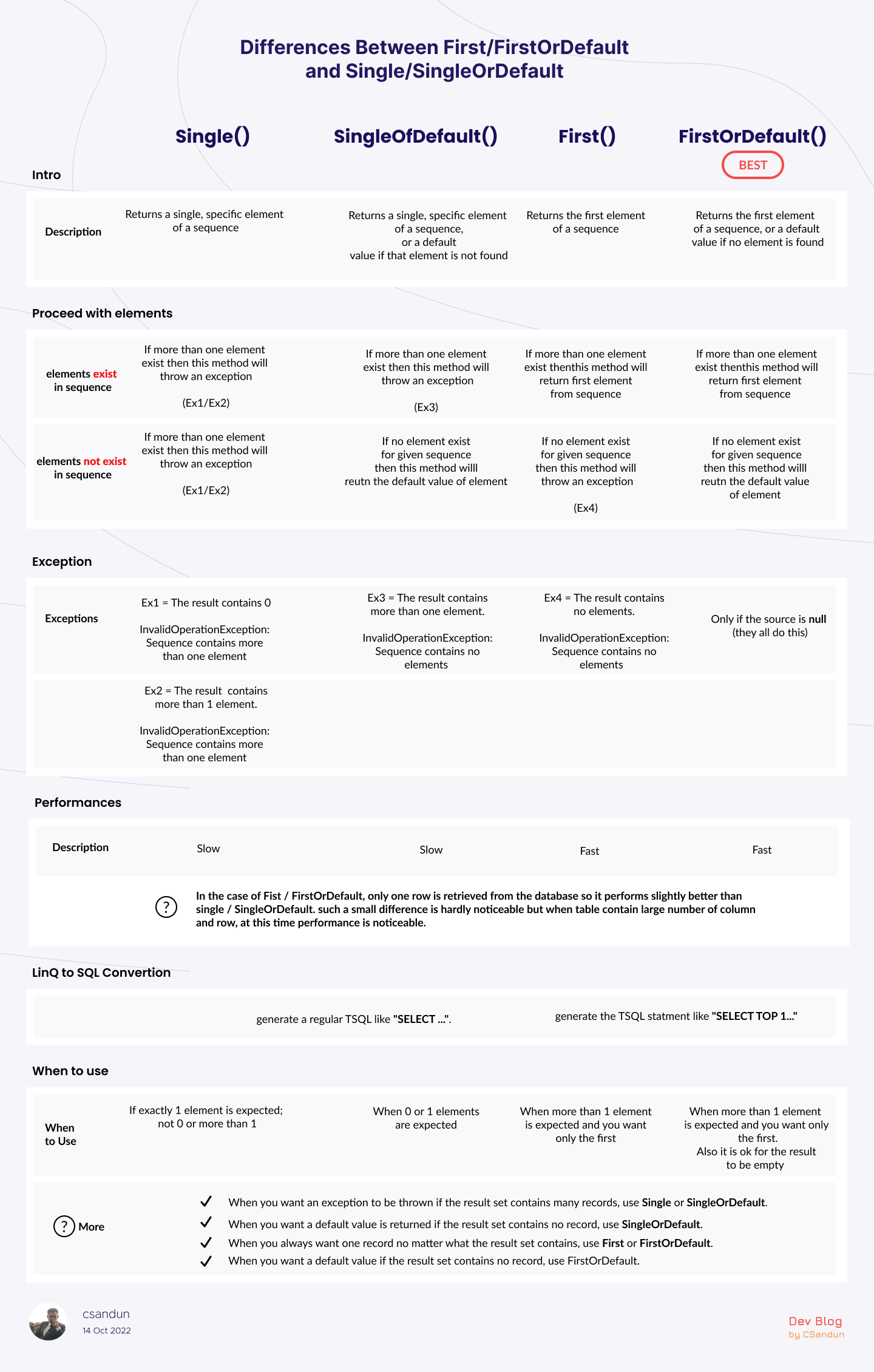Were you familiar with the "The result contains no elements." exception with "First()" and "Single()" methods? How did you resolve this exception? What does done with the underhood of these methods with Linq? I faced this error last week in my code. So it encouraged me to discover what is happening in First, FirstOrDefault, Single, and SingleOrDefault.
Here I am going to explain how they work on a surface level but also how they function behind the scenes and take a deeper look into their
performance. As well as I am going to bring up the exceptions that happen in these methods.
This is the first part of the explanation of First, FirstOrDefault, Single, and SingleOrDefault. Here I am trying to say only the differences between each other using a mind-blowing summary table.
Keep in touch with my second post of this; I will discuss these points using examples. Mainly performances(Benchmark test) and exceptions are occurring.
Summarizing the differences between these methods
LINQ provides element operators that return a single or specific element from a collection. The element operators are Single, SingleOrDefault, First, and FirstOrDefault.
Documentations and many blogs are described more clearly. I will put the best references for you.
But today, I am summarizing all points using a table for easy understanding.

My Suggestion
I always tend to use FirstOrDefault. If you want to be picky with performance, you should use FirstOrDefault in EF. And it is encouraging me to reduce the exceptions that we discussed above.
Keep in touch with my second part, and I will prove what you should tend between these methods.
I hope you find this content helpful. Keep touching my diaries. Learn something new. Comment your thoughts and share the content.
Have an incredible coding journey.
See you soon. ✌✌








